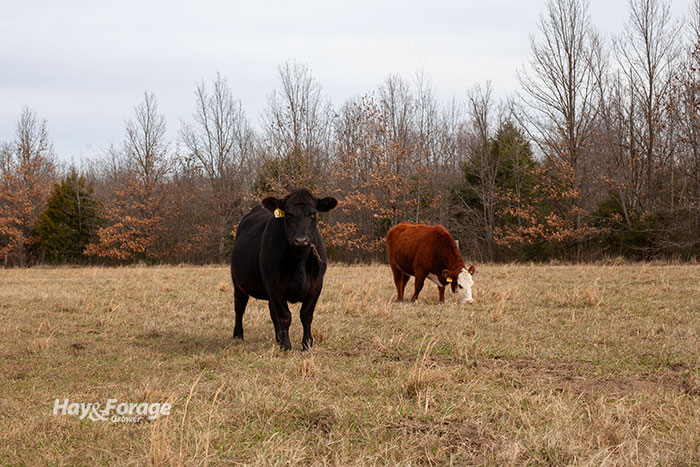
The immediate effects of drought were evident this summer in pastures where forage went dormant, but signs of long-term drought damage from the past several dry growing seasons may start to show in perennial stands. Frost seeding and interseeding in late winter can strengthen these stands for the coming year, but preparation for pasture renovation must begin in the fall.
In a recent issue of Iowa State University’s Growing Beef newsletter, Rebecca Vittetoe and Meaghan Anderson write about improving soil fertility and reducing forage competition now to ensure frost seeding and interseeding are more effective in the months ahead. There is still time to take soil samples and apply fall herbicide if necessary.
The extension field agronomists assert that soil pH, phosphorus (P), and potassium (K) are the primary measurements to note in soil test results. Grasses and clovers need a soil pH around 6, whereas alfalfa prefers a soil pH of approximately 6.9. If lime is required to meet these criteria, follow application recommendations for the correct incorporation depth.
Raising P and K levels from low to adequate can also enhance germination and help seedling establishment; however, the field agronomists advise against applying nitrogen (N) before frost seeding or interseeding. Avoiding early season N will curb competition from other forages and weeds in the pasture.
Fall herbicide applications will further prevent weed competition. “Applications should be made when the sun is shining and daytime temperatures are above 50°F to 55°F. Fall herbicide applications can still be effective after a frost event; however, before spraying, check the weeds present to make sure they still look healthy,” the field agronomists inform.
Even though overgrazing pastures is usually discouraged, letting livestock graze forage too short may be beneficial in this situation. Success rates for frost seeding and interseeding may be higher when there is less plant material on the soil surface. Lowering the cutterbar during a late forage harvest can have the same effect.
“This will weaken the current stand, but it will help the new seeding to compete with the current stand next year,” the field agronomists state. “This also helps improve seed-to-soil contact when frost seeding or interseeding.”

